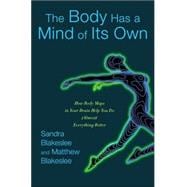
| Introduction: The Embodied Brain | p. 3 |
| The Body Mandala: or, Maps, Maps, Everywhere | p. 7 |
| The Little Man in the Brain: or, Why Your Genitals Are Even Smaller Than You Think | p. 15 |
| Dueling Body Maps: or, Why You Still Feel Fat After Losing Weight | p. 28 |
| The Homunculus in the Game: or, When Thinking Is as Good as Doing | p. 54 |
| Plasticity Gone Awry: or, When Body Maps Go Blurry | p. 71 |
| Broken Body Maps: or, Why Dr. Strangelove Couldn't Keep His Hand Down | p. 98 |
| The Bubble Around the Body: or, Why You Seek Elbow Room | p. 109 |
| Sticks and Stones and Cyberbones: or, The End of the Body as We Know It? | p. 138 |
| Mirror, Mirror: or, Why Yawning Is Contagious | p. 163 |
| Heart of the Mandala: or, My Insula Made Me Do It | p. 180 |
| Afterword: The You-ness of You | p. 203 |
| Acknowledgments | p. 209 |
| Glossary | p. 211 |
| Index | p. 217 |
| Table of Contents provided by Ingram. All Rights Reserved. |
The New copy of this book will include any supplemental materials advertised. Please check the title of the book to determine if it should include any access cards, study guides, lab manuals, CDs, etc.
The Used, Rental and eBook copies of this book are not guaranteed to include any supplemental materials. Typically, only the book itself is included. This is true even if the title states it includes any access cards, study guides, lab manuals, CDs, etc.
Excerpted from The Body Has a Mind of Its Own: How Body Maps in Your Brain Help You Do (Almost) Everything Better by Sandra Blakeslee, Matthew Blakeslee
All rights reserved by the original copyright owners. Excerpts are provided for display purposes only and may not be reproduced, reprinted or distributed without the written permission of the publisher.